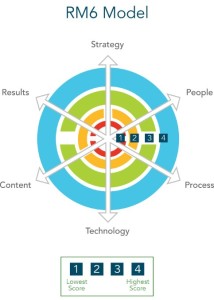Almost eight years ago, during one of the toughest economic times most people had experienced, I wrote an article discussing how organizations and leaders can successfully navigate through those difficult periods, like significant financial shifts in the marketplace and corporate change.
Since then, there have been ups and downs for many industries and slowdowns and upticks in economies around the globe. But, the lessons we applied in 2008 are not really all that different from the lessons that can be applied today in a variety of circumstances.
The key element that separates companies that falter from those who emerge stronger than ever is people. Leaders need to engage, motivate, capitalize and support their people’s talents and knowledge. So, how can you create resilience in the face of an economic thunderstorm and how can you view adversity as the feedstock for future growth?
Successfully Navigating Big Change
The critical first step is making sure that people don’t jump on “the freakout train” of doom when things start to look tough. Start by truly identifying with your employees’ initial mindset and how they feel. It is hard to rally people in difficult times if you don’t make an emotional connection and communicate that you know what it is like to be them. But how do you tell people, for example, that they’re more important than ever after you’ve just laid off five percent of their colleagues or that no one is getting raises this year?
The “Mindset Mountain” Watercooler sketch can help. On the left, we see the natural and absolutely destructive behaviors that kick in during bad times. In essence, people are typically trapped on three “survival cliffs” – the emotions of loss of control, fear, uncertainty and anxiety.

Mindset Mountain
The focus shifts from team performance to self-preservation, and this is exactly the opposite of what’s needed. When it’s more important than ever for people to contribute their best, unfortunately we often see the worst. We need people pulling together and rowing in the same direction; it’s no time for people to be independently going off on their own and digging their own foxhole to hunker down.
To ensure the right focus, leaders must tell people the truth about where they stand today and clearly identify the top three to five priorities that will enable the organization to emerge stronger than ever. It is important that everyone is 100 percent dedicated to those priorities, not individual team or functional priorities. By clearly defining reality and identifying the priorities that will get you to the future state creates hope and enables people to act on that hope.
One of the other challenges we regularly see is that during times when information is vital, organizations go silent. It’s crucial to communicate in a way that helps people:
- Understand the rationale for the decisions and strategy of the organization.
- Learn in the best way – visual, auditory, kinesthetic, etc.
- Connect their individual roles to the outcomes the organization needs to deliver.
Lastly, when most organizations tend to play it safe, this is actually the time when leaders need to take smart risks. Give your people guidance on where there are hard lines, no lines or specific guidelines for risk taking.
Below is a proven process for addressing the above successfully and ensuring you’re doing all you can to help your people stay engaged during tough times.
- Define reality. People are amazingly resilient and are able to deal with reality even if it has a downside, but the unknown is paralyzing. A leader’s job is to deliver the facts of where the organization currently stands and the current view on market conditions. Uncertainty has greater negativity than the bad news itself. That’s why accurate “big picture” information becomes an important tool. Providing the context of the actions the business needs to take is essential.
- Communicate the score. More than ever, people are interested in costs, sales, and financial strength as a measure of “how we’re doing.” Use this curiosity and interest to better immerse all employees in the metrics of the business. The more people know, the better decisions they can make. Leaders need to balance the tension of “what’s real” with “what’s possible.”
- Use urgency as an alignment ally. Instead of looking at change like a near-deathbed crisis lurking around the corner, accelerate your efforts to immediately analyze and act on problems instead of wandering around them. Urgency can better frame the challenges, engage people in a deeper understanding of the issues, and equip them with the responses necessary to be successful.
- Scout the possibilities. Deputize your people as “opportunity scouts” so you can tap into what your people know about the current challenges and get them involved in developing ideas for a response and recovery plan that creates value. No matter how intensive past productivity efforts have been, people can always see more opportunities when they are engaged in the “why” and the “what,” and then given a chance to suggest the “how.”
- Celebrate small victories. This means giving recognition to the adaptive actions that are getting positive results. Don’t over-hype the small gains, but in baseball lingo, it’s the singles and doubles that allow you to emerge stronger and persevere throughout the game.
Dealing with the reality head-on and recognizing that your people can be critical resources to helping overcome difficult situations is the most important thing that you can do. By inviting them in as problem solvers and enablers of the business, you’ll alleviate their fear and truly drive higher levels of engagement. People want to help, and you’re opening the door to let that happen.
Business & Finance Articles on Business 2 Community(56)









